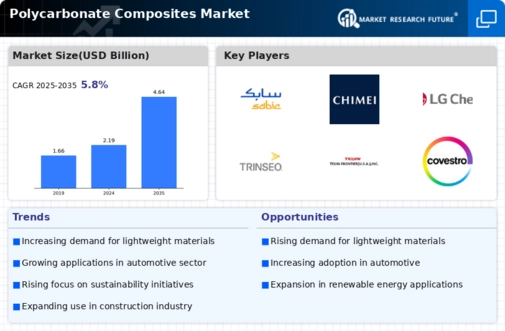Market Analysis
In-depth Analysis of Polycarbonate Composites Market Industry Landscape
Many factors affect the Polycarbonate Composites market's growth, trends, and performance. Automotive demand for lightweight and durable materials drives the industry. Polycarbonate composites are being used for bumpers, interior panels, and structural elements in the vehicle industry to improve fuel efficiency and sustainability.
The construction industry also affects market dynamics. These materials appeal to architects and builders seeking new solutions due to their strength and lightness. Polycarbonate composites help to green building projects, which enhances their popularity.
Global environmental concerns and laws shape polycarbonate composites markets. Recycling and environmentally friendly products are becoming more popular as firms strive to reduce carbon footprints.
However, variable raw material prices and costly polycarbonate composite production methods affect market dynamics. These composites' production cost depends on polycarbonate resin and reinforcing fiber pricing. Market companies must manage cost volatility while maintaining product competitiveness.
The Asia-Pacific polycarbonate composites market is noteworthy. In China and India, end-user industries including automotive and construction are growing, driving demand for these materials. The region's manufacturing and cheap labor further boost the market. North America and Europe also matter due to sustainable practices and advanced material utilization in numerous industries.
Polycarbonate composites market dynamics depend on technological advances and breakthroughs. Research and development are improving these materials' characteristics, boosting their applications and market. Improving flame retardancy, UV resistance, and durability diversifies polycarbonate composites in numerous domains.
The industry demand, regulatory landscape, environmental concerns, and technological breakthroughs affect the Polycarbonate Composites market. As industries seek lightweight, durable, and environmentally friendly materials, the polycarbonate composites market will increase and diversify globally. The material's adaptability and capacity to meet changing industry needs have led to a strong market outlook, notwithstanding obstacles.









Leave a Comment